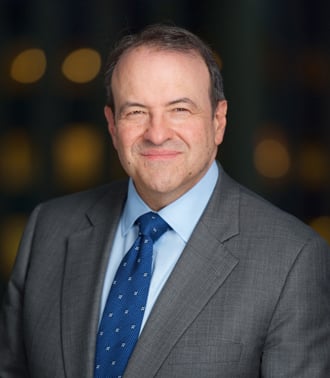Government Oversight Under Integrity Agreement Dooms Subsequent Relator's FCA Suit Because of Public Disclosure Bar
Courts have provided little guidance about how government oversight and corporate integrity agreements might implicate the public disclosure bar. But late last year, the Sixth Circuit issued an important decision on the issue. In United States ex rel. Maur v. Hage-Korban, 981 F.3d 516, 527–29 (6th Cir. 2020), the Sixth Circuit affirmed dismissal of an action under the public disclosure bar where the relator alleged the continuation of a scheme that was the subject of oversight by the Office of Inspector General for the US Department of Health and Human Services (HHS-OIG) through an existing integrity agreement. Because the new allegations of misconduct were not "so removed" from the "resolved" conduct covered under the integrity agreement, the relator failed to qualify as an original source who had materially added to the public disclosure. Id. at 528.
The suit involved defendant Dr. Hage-Korban, who had previously settled a qui tam action with the government that alleged he performed medically unnecessary procedures between 2004 and 2012. As part of the settlement, Dr. Hage-Korban and the HHS-OIG entered into an integrity agreement, in effect from November 2013 through November 2016. Under the terms of that agreement, Dr. Hage-Korban was required to engage an independent review organization to monitor coding and billing, conduct a review of cardiac procedures, assess the medical necessity of procedures, and generate quarterly reports for the Inspector General.
In 2017, Dr. Maur, a colleague of Dr. Hage-Korban's, filed a new qui tam suit against Dr. Hage-Korban and others, alleging that the "exact scheme [that] was previously detailed and exposed in" the earlier action continued unabated. Id. at 521. Dr. Maur identified new examples of alleged misconduct between March and November 2016—during the pendency of the HHS-OIG oversight. The district court granted defendants' motion to dismiss based on the public disclosure bar.
In affirming the district court's decision, the Sixth Circuit made three central holdings. First, the court concluded that the integrity agreement was a qualifying public disclosure because it was a "federal report" within the meaning of the statute. Id. at 522. Second, Dr. Maur's allegations concerned the same actor (Dr. Hage-Korban) engaging in the same type of fraud (unnecessary cardiological procedures and testing) as those made in the various public disclosures (the first qui tam suit, press about that suit and the integrity agreement), and so the allegations were "substantially the same." Id. at 526. And third—the most notable of the Sixth Circuit's holdings—the court held that Dr. Maur did not "materially add" to the public disclosures, and thus was not an original source, because he "merely provid[ed] additional instances of the same type of fraud." Id. at 528–29.
The court's third holding turned on (1) the "temporal proximity" of Dr. Maur's allegations to the earlier settlement and (2) the existence of a pending integrity agreement covering the same, but earlier-in-time, conduct. That the conduct alleged by Dr. Maur occurred "only months after the 2015 settlement" and while the integrity agreement, and its component oversight arrangement, was still in effect indicated that the government was already well-positioned to learn about any additional misconduct by Dr. Hage-Korban. Id. at 528. As a result, the court reasoned, Dr. Maur did not provide any information that would have affected the government's decision-making. The public disclosures not only "set the government on the trail of the alleged fraud without [Dr. Mauer's] assistance," but the government was "still in fact on the trail" of the alleged fraud because of its oversight. Id. at 529.
The Sixth Circuit's decision is helpful to defendants by giving teeth to the "materially add" language in the original source exception. When the government is already monitoring a defendant through a corporate integrity agreement, a relator has little to add to the mix. Under those circumstances, future relators with knowledge of ongoing conduct should be required to show how their allegations "materially add" to what is already revealed in public disclosures.
The Sixth Circuit did provide a fairly easy roadmap for future relators seeking to avoid the fate of Dr. Maur. In a footnote, the court suggested that Dr. Maur might have qualified as an original source had he alleged that Dr. Hage-Korban falsified his reporting to, or obscured relevant information from, the government during the oversight period. That, the court suggested, might have affected the government's decision-making and materially added to the public disclosures. Whether allegations of falsification will be sufficient to save future relators' claims from dismissal remains to be seen. Regardless, Maur is an important decision that sheds light on how courts will apply the public disclosure bar where the allegations involve a period of government oversight covering similar conduct.
© Arnold & Porter Kaye Scholer LLP 2021 All Rights Reserved. This blog post is intended to be a general summary of the law and does not constitute legal advice. You should consult with counsel to determine applicable legal requirements in a specific fact situation.

